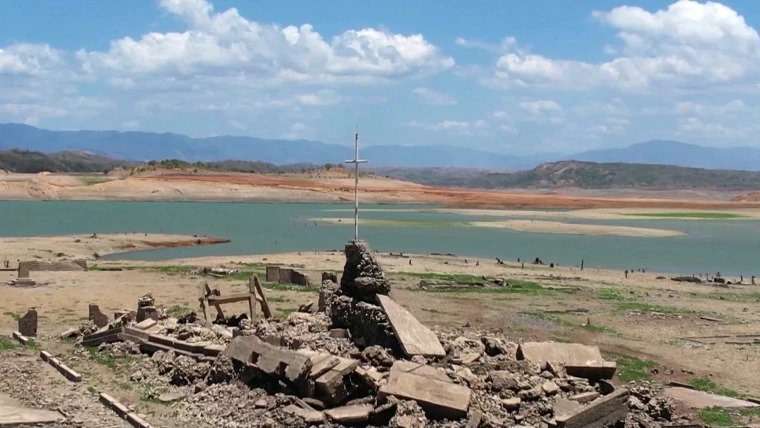
Centuries-old Philippines town emerges from dried up dam
by Mick the Ram
The ruins of a town almost 300 years old have resurfaced in the Philippines as searing temperatures partially dried up a major dam.
Pantabangan was submerged in the 1970’s to enable the building of a much needed reservoir. However, during extended hot and dry spells it has occasionally given people a glimpse into the past, as parts emerge from the water.
It comes as almost half the country is experiencing a drought, with temperatures reaching a high of 50C (122F) in some places.
Nevertheless, this is now the longest that the town has ever been above water since its original construction.
50 metre drop
This is actually the sixth time that Pantabangan has reared from the depths, since the dam was completed nearly 50 years ago.
It had been constructed to provide irrigation water for local farmers to generate hydro-electric power, but in recent weeks the dam’s water levels have dropped nearly 50 meters (164 feet) below what had become the normal 221 metres, revealing parts of the old settlement, including a church municipal hall marker and tombstones.
Tourists drawn to the emerging ruins
The ruins, which are visible in the middle of the Pantabangan Dam in Nueva Ecija province, is some 202km (125 miles) north of the capital, Manila, and have now become something of a tourist draw, even as the region swelters in extreme heat.
Over a thousand people displaced when built
It was back in June 1971 that President Ferdinand Marcos arrived at the old town of Pantabangan, along with many other dignitaries, for a groundbreaking ceremony to signal the beginning of an earth-fill dam construction on an embankment on the Pampanga River.
It led to around 1,300 people being relocated elsewhere from the reservoir zone.
One of largest in Asia
It was finally completed in 1977 and began life as a multi-purpose dam, and became one of the largest in Southeast Asia, as well as being recognized as one of the cleanest in all of the Philippines.
Three quarters of main island hit by drought
This current drought has hit more than half of the country’s provinces, with the relentless heatwave straining power supplies on Luzon, the country’s main island, which contributes 75 per cent of economic output.
The extreme temperatures have disrupted the daily lives of millions of people, with many schools having to shut and office workers being advised to work from home until further notice.
El Niño plays a major role
The archipelago nation always has its hottest and driest months from March to May, but the El Niño weather phenomenon has really exacerbated conditions this year.
El Niño, is a climate pattern characterized by warmer-than-average sea surface temperatures in the central and eastern Pacific Ocean, and this time around it has brought below-average rainfall to the Philippines, which has led to this unusual reappearance of a lost town.






0 Comments